Multi-day backcountry trip: What to pack
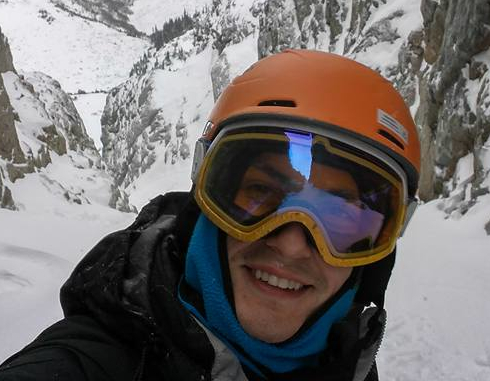
By AVI KLEIMAN
What to pack for a multi-day backcountry trip
Sometimes it can feel like the list of gear you need for the backcountry is endless. You will want to bring all sorts of cool little gadgets. However, each item you bring will place additional weight on every step you take. Therefore, we created a checklist of the essential items you will want to pack for a multi-day backcountry trip. There is plenty more that you could pack, but here is what you will need:
- Touring Equipment
- Avalanche Safety Gear
- Navigation
- Shelter
- Kitchen
- Food & Water
- Medical Kit
- Other Tools
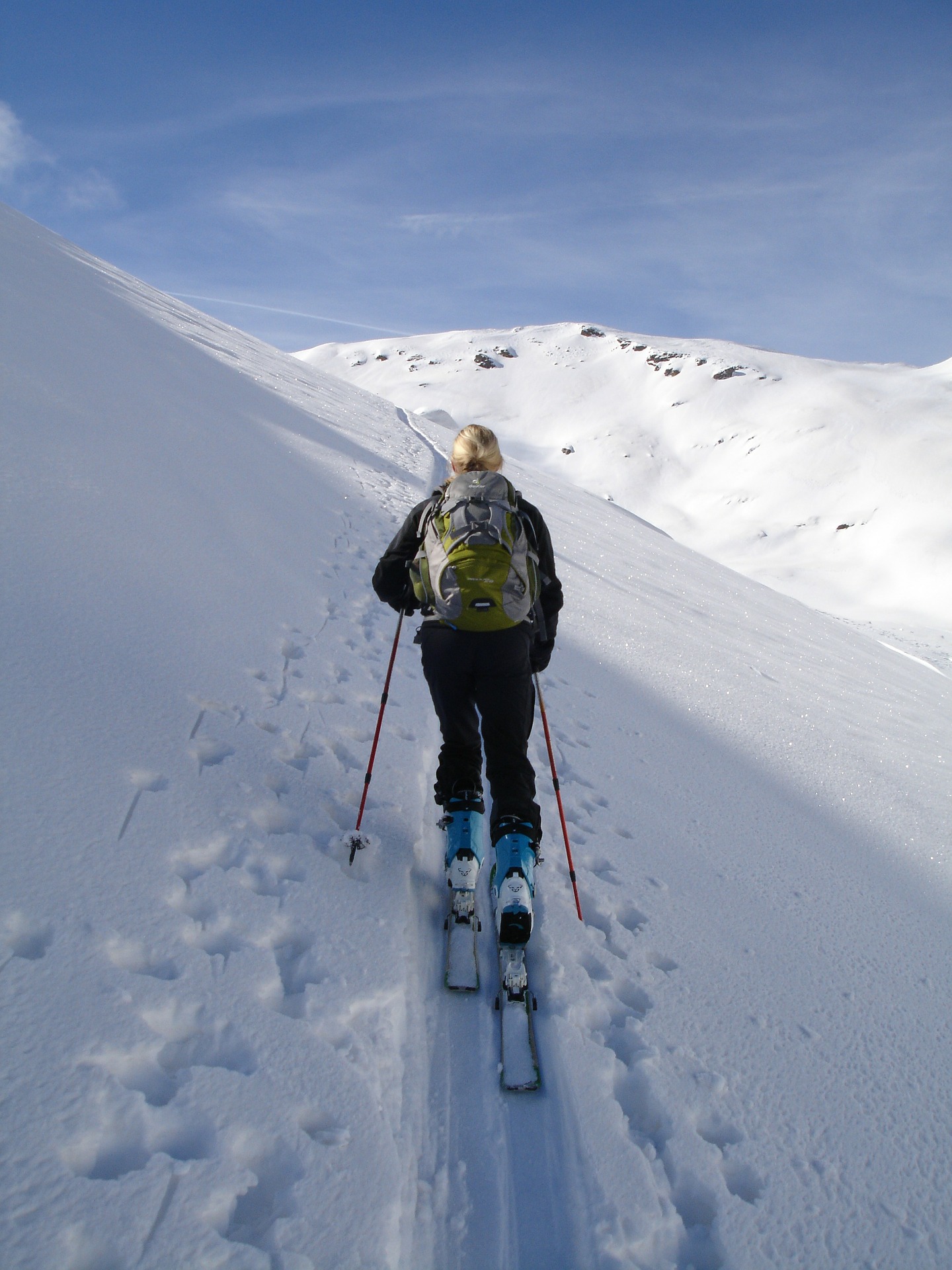
Touring Equipment
Obviously you can’t go on a backcountry tour without your touring equipment. Ever since I was a little kid, I’ve used the same basic checklist whenever I go up to the mountains: Toque, Goggles, Boots, Gloves, Board(or Skis), Pass, Jacket, Pants. However, that’s just the riding gear you would have if going to the resort.
When it comes to touring, I use the exact same list, but a few items are now expanded as follows:
Toque – you may wish to carry a lighter cap (or helmet liner) for hiking and a warmer toque for the campsite. In addition, you should always wear a helmet in the backcountry as you never know what is hidden under that beautiful white powder.
Goggles – As conditions may vary on a multi-day trip, it’s a good idea to have more than one lense (high-light and low-light).
Boots – Light touring boots are essential. However, I’ll argue that campsite booties are key as well because the feeling of changing out of your sweaty boots after an 8 hour hike is indescribable. Personally, I carry the Baffin Base Camp Insulated Booties.
Gloves – Again, you will want at least two sets of gloves: one for hiking and one for the campsite/riding.
Board/Skis – It goes without saying, but.. you should have your splitboard or touring skis, and touring bindings. You may also have separate adjustable touring poles such as the Black Diamond Traverse Ski Poles.
Pass – Your “pass” for the backcountry would be your skins. You’d have a hard time touring without them!
Jacket & Pants – Layering is the key to staying warm and light. A good layering setup will have a base layer, mid layer, and outer shell. If you are expecting extreme cold, you may want a secondary mid layer for extra warmth. Check out our post on backcountry layering here.
Avalanche Safety Gear
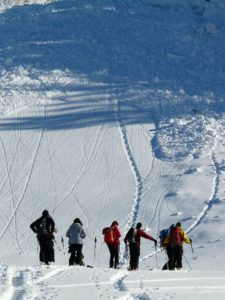
You may be thinking that the avalanche safety gear is part of the touring equipment, and you would be right. However, this gear is so important that it deserves a separate section of its own. What you will need to remember here is your Beacon, Shovel, and Probe.
Even more important than carrying this gear is knowing how to use it. Please make sure, at the very least, you have completed basic avalanche safety training before going into the backcountry.
Navigation
It is important that you know where you are going and how you will get there. In addition, you should be able to figure out alternative routes if things don’t go according to plan.
In today’s age of technology, every smartphone can provide you with a GPS topographic map anywhere in the world. However, as useful as this is (and I use it all the time), you should never rely on the battery in your phone alone. Furthermore, if you do carry your phone, make sure it is a safe distance from your beacon as it is possible that it will cause interference with the radio waves.
It may seem archaic, but your best bet is to carry a map and compass. If you don’t already know how to use a map and compass, learn now! I will normally carry two maps: one zoomed in on the zone I’m riding, and one zoomed out on the surrounding area in case of emergency.
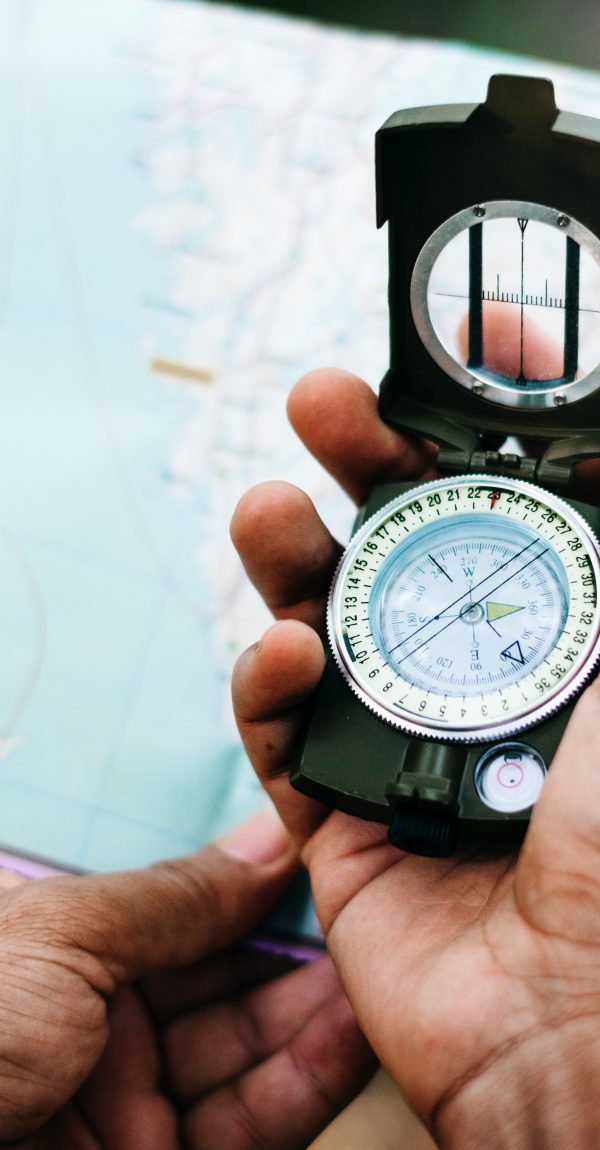
Shelter
You will have a hard time sleeping in the backcountry without proper shelter. I recommend using a winter specific tent, not a 4 season tent, as a winter tent will hold out in harsher environments.
In addition to your shelter, you will want a good winter specific sleeping pad and sleeping bag.
A common mistake beginners make is that they will carry a good -15C sleeping bag but only a basic sleeping pad. When we sleep, we lose the majority of our heat out of our backs. Therefore, a good winter sleeping pad will deflect the cold from the snow beneath and reflect the warmth back to your body. Personally, I carry the Therm-a-Rest NeoAir XTherm as it has the best warmth-to-weight ratio on the market.
Kitchen
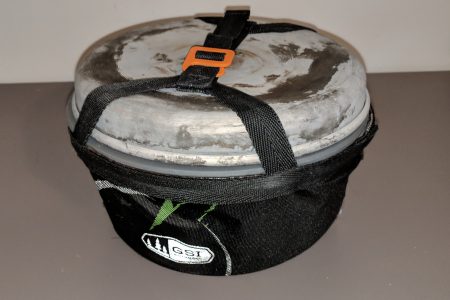
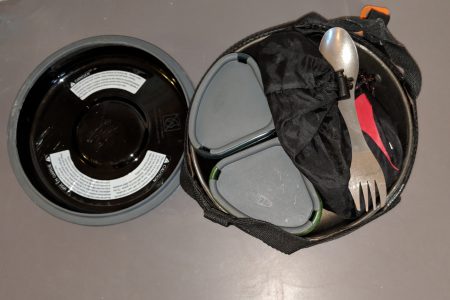
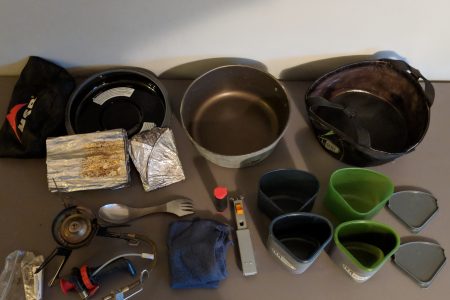
From boiling water to cooking meals, the kitchen set is an essential piece of your backcountry kit. A good set will include all of the following items:
- Cooking Pot
- Stove & Gas
- Bowl/Cup
- Cutlery
Again, this is a list of the essentials; there is plenty more that you could pack for some backcountry luxury. I use the GSI Outdoors Pinnacle Backpacker Cookset (see our full review here) with the MSR Whisperlite International Stove (see our full review here).
Food & Water
It can be tempting to bring all your favorite drinks and meals with you, but it will cost you (in weight). Planning your water and meals carefully is key to having a comfortable trip. It can take a lot of practice to perfect this art, but here are a few tips.
Moisture is the enemy – this phrase holds true in all backcountry touring management, but particularly for packing food. You want to avoid bringing food that will freeze and add extra weight to your pack.
Quick cooking – Instant oats, Kraft Dinner, dehydrated meals. You want meals that will cook quickly as your fuel is a very valuable resource. This is especially true if you will have to boil snow for water.
Plan water sources – Water is one of the heaviest things you have to carry with you. So, a great way to save weight is by knowing where the water is along your route. By planning ahead, you can minimize the amount of water you are carrying at any point in time.
Medical Kit
When you are isolated in the backcountry, you should be prepared for any eventuality. Therefore, packing a medical kit is essential to dealing with emergency situations.
There are a variety of pre-set kits available, but they all carry the same general items to be able to attend to:
- Cuts/Wounds
- Burns
- Sprains
- Fractures
- Fevers
- Pain
It is also important that your medical kit remain in a waterproof space as the last thing you will want to find in an emergency is a soaked kit. Personally, I carry the Adventure Medical Ultralight and Watertight with a few minor variations of my own including sewing materials.
Other Tools
Your “other tools” are where you can start to fill in the fun little gadgets, but there are a few items to note that still fall under the essential category.
Headlamp – You should always carry a headlamp, even if you think you’re just going out for the day. Always be prepared to travel through the night. In addition, you will want some light for the campsite at night. Check out these great hiking headlamps.
Multi-Tool – Never underestimate the usefulness of pliers! However, beyond pliers, you may find yourself needing a screwdriver, allen key, and knife. That is where a good multi-tool has got you covered. I never go anywhere without my Letherman Skeletool CX.
Ski Strap – Having items in your kit that have multiple utility is a great way to save weight. A tension ski strap (or Voile Strap to some) does more than just hold an A frame on your backpack (essential for boot-packing sections). It can be used for compression, tying things together, an emergency tourniquet, and so much more.
Rope – There should always be space for a little bit of rope. I’m not talking about climbing quality rope (unless the excursion calls for it), just some rope to tie stuff together, setup a clothes line, holding things up, tie things down, etc.
Conclusion
This guide outlines all the essentials you would need to pack for a multi-day backcountry trip. If you go through all the items above, you can rest assured that you’re covered for hiking, riding, and camping.
To recap, here is my list of essentials:
- Toque/Helmet
- Goggles
- Touring Boots & Camp Booties
- Touring Gloves and Riding/Camp Gloves
- Board/Skis/Poles
- Skins
- Jacket/Pants/Layers
- Beacon
- Shovel
- Probe
- Map & Compass
- Winter Tent
- Winter Sleeping Bag
- Winter Sleeping Pad
- Cooking Pot
- Stove & Gas
- Bowl/Cup
- Cutlery
- Food & Water
- Medical Kit
- Headlamp
- Multi-Tool
- Tension Ski Strap
- Rope
Have fun and be safe!
